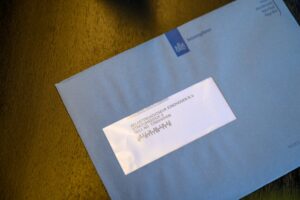
What exactly do annual accounts mean and what should you disclose in the annual accounts? Read more about it here.


If you have come to the point where it is more fiscally or legally advantageous to keep your Convert sole proprietorship or partnership into a limited liability company (BV) then this is usually not at the beginning of the (book) year, but sometime during the year. To avoid unnecessary difficulties, something has been arranged for this, namely the establishment of a BV with retroactive effect.
For the retroactive establishment of a BV you have two options: a 'ruisende' and 'geruisloze' inbreng. Depending on the situation, one option may be preferable to the other. But why would you want to set up a limited liability company with retroactive effect, what are the advantages of this over in the middle of the (book) year?
There are a number of reasons why you should incorporate a BV retroactively. We've listed them for you:
As mentioned before, there are two options for retroactively converting your company into a BV. These are the noisy or noiseless incorporation. Both forms have their advantages and disadvantages and their own courses of action.
To retroactively incorporate your company noisily, you must take action within 3 months in the year. This is because you have to file a letter of intent with the tax authorities in the first 3 months of the year, this means that you inform them that you intend to convert your company noisily into a limited liability company. If you have filed this letter of intent within the first 3 months of the year, then you will be allowed to establish a BV retroactively.
If you filed the letter of intent within the first three months of the year, you do not have to have incorporated the BV within these three months as well. You then have 9 months, until October 1 of the current year, to incorporate the BV and complete all other matters. If you file this application and do not act on it afterwards, this will not be a problem, but you will have to wait until next year for a noiseless incorporation.
Ook is er de optie om de onderneming geruisloos om te zetten. Om je onderneming geruisloos om te zetten in een bv moet je binnen de eerste negen maanden van het jaar een intentieverklaring indienen bij de Belastingdienst. Dit is een aanzienlijke langere termijn dan de drie maanden bij een ruisende omzetting. Heb je de intentieverklaring op tijd ingediend bij de Belastingdienst dan heb je in totaal vijftien maanden de tijd om je bv op te richten en het omzetten te voltooien. Als je met terugwerkende kracht op 1 januari een bv in wilt, heb je nog tot 1 april volgend jaar, indien de intentieverklaring op tijd ingediend is, om alles af te ronden.
During the cessation of the personal income tax business, a part of the business often comes under the cessation profit. Cessation profit is the release of hidden reserves, tax reserves, goodwill and disinvestment credits. You have to pay tax on this which is taxed the same as normal profit.
However, as an entrepreneur, you may convert (part of) the cessation profit into a annuity. This has the advantage of not having to settle at the moment and possibly paying at a lower tax rate in the future. This is since you will only receive this benefit when you no longer have a profit from business and may also have already quit your BV. As a result, your income in Box 1 is likely to be reduced.
If you want to convert the termination profit, you have to take into account when this happens. This is because there is a deadline for converting the cessation profit into an annuity. This must be done within 6 months of ending the original company. If you do this later, you are too late and it is no longer allowed. You will have to pay over the entire termination profit.
So there is a lot involved in converting a business, also there are many deadlines you need to be aware of. Here they are again in a row:
Would you like your convert company into a limited liability company, because you think it is advantageous for your situation? Then take contact with us. We are happy to guide you through the entire process from analysis to completion of incorporation and, if necessary, further help you with your administration and tax returns!.
Do you want to start today?

What exactly do annual accounts mean and what should you disclose in the annual accounts? Read more about it here.

Dissolving a sole proprietorship in the Netherlands requires some important tax and legal steps. Read more about it here.

A limited liability company (bv) in the Netherlands pays various taxes. In this article, we explain which taxes apply to a bv.

Belastingadviseur Eindhoven is part of Adviesgroep Eindhoven. The one-stop-shop for individuals, freelancers and directors and their companies.
Om de beste ervaringen te bieden, gebruiken wij technologieën zoals cookies om informatie over je apparaat op te slaan en/of te raadplegen. Door in te stemmen met deze technologieën kunnen wij gegevens zoals surfgedrag of unieke ID's op deze site verwerken. Als je geen toestemming geeft of uw toestemming intrekt, kan dit een nadelige invloed hebben op bepaalde functies en mogelijkheden.